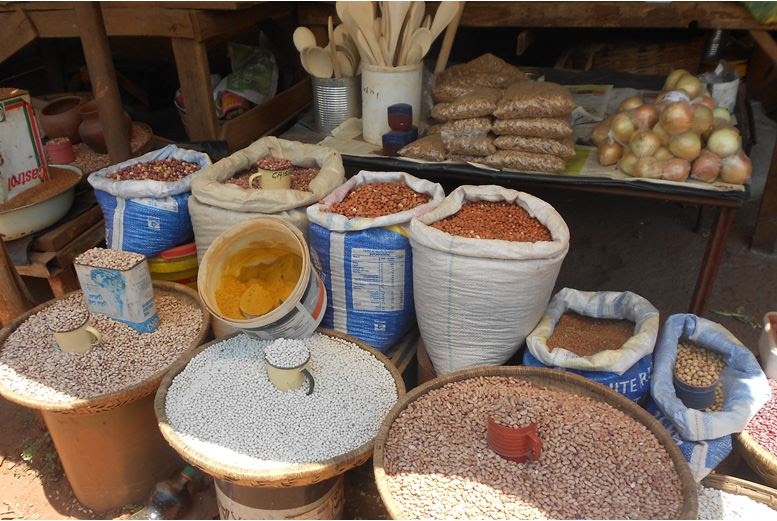|
Getting your Trinity Audio player ready…
|
By Charles Dhewa
For most developing countries, the COVID19 pandemic has shown the undisputed value of indigenous food. Several communities that had become used to depending on imported food and medicines suddenly discovered they can use lockdowns and restrictions to taste and use indigenous food as well as medicines that are easily an expression of natural remedies. There is no longer any doubt that reviving indigenous food systems is a more meaningful way of addressing climate change.
Going beyond awareness
In communities whose livelihood is based on natural resources, everybody is now aware of climate change. Resources should not continue to be directed at raising awareness about the existence of climate change or variability but generating solutions based on a full understanding of its root causes. Any change, including climate change, stems from a certain state of affairs from which the current conditions can be compared. What is the change that is happening and why? Answering some of these questions requires re-orienting knowledge systems and policies it towards indigenous food systems. Instead of continuing to promote exotic food systems and associated knowledge, each developing country should establish a government department or ministry responsible for the restoration of indigenous knowledge including food systems.
Working with local communities, policymakers should explore climate change from the natural phenomena that once existed in any community or economy before imported industrialization. For instance, most African countries had natural ecosystems in which natural forests, human beings, insects, wild animals, and other elements co-existed without external forces trying to change the ecosystem. As countries try to embrace industrialization at the expense of natural ecosystems what is the opportunity cost of this transition?
If developing an economy is about building physical infrastructure, employment creation, increasing the Gross Domestic Product (GDP), export promotion, and improving standards of living, what is the opportunity cost of trying to achieve these goals? Infrastructure development is often in the form of physical structures like roads, railways, buildings, residential areas, clearing land for producing export crops and many others. As developing countries build or set up these structures, what are they replacing as natural resources? How are they replacing natural resources that existed before setting up these structures? It is unfortunate that the majority of developing countries are destroying natural ecosystems and replacing them with colonial imported assets. In the end, they cry foul about climate change yet the solution is in restoring natural resources including indigenous food systems that are playing a critical role in fighting COVID19.
Developing economies through natural food systems
Traditionally, human beings have developed tastes and preferences for foods that grow naturally without destroying their local economies and ecosystems. Destroying natural food systems has been accompanied by the destruction of indigenous knowledge systems – replacing natural foods with imported foods. The pandemic has shown the importance of developing pathways of propagating local knowledge in order to increase the production and utilization of natural foods. Relying on countries that have done research on their food systems and brought such food systems for developing countries to use in destroying their own natural foods is not sustainable. Countries that have completely undermined their natural food systems have become production zones for developed countries.
Developing countries cannot continue destroying soils and climates on which natural foods grow. As they build infrastructures like tobacco barns, large dams, and wide roads, African countries are destroying their forests, soils, and microclimates which have been part of their food systems including insects, wild animals, birds, bees, and others for generations. Honey production which used to grow naturally has gone down and developing countries are trying to use scientific methods of keeping bees. They have also resorted to using imported methods of producing mushrooms after destroying natural environments in which mushrooms thrive. After destroying the natural environment for fish like rivers, fish production has been moved to artificial environments such as fish ponds even in rural communities where rivers flow throughout the year.
Reiterating the big questions
When we destroy and replace our natural resources in a bid to grow our economies using external knowledge, what is the opportunity cost? In other words, developing countries are trading their natural resources and ecosystems with imported knowledge. Where policymakers talk in terms of dollars and cents in relation to trade balance (exports versus imports), they have a knowledge deficit by importing much knowledge and exporting less indigenous knowledge. On the other hand, imported knowledge comes through commodities like seeds, chemicals, tastes, and equipment, among other forms.
Policymakers should ask themselves: How much knowledge are we importing to apply on our natural resources in order to export agricultural commodities? This assumes we are equipping and equating our knowledge to local resources. How much do we realize that our uniqueness is in applying indigenous knowledge to our natural resources? We can create markets that earn us foreign currency without plundering natural resources? For how long are African countries going to continue focusing on earning foreign currency from food systems that come from outside instead of developing indigenous food systems for exporting to the whole world?
The starting point is acquiring and absorbing sufficient knowledge about local food systems and natural ecosystems. In this vein, raising the profile of indigenous food systems can follow the following steps:
· Elevating enormous opportunities existing within natural food systems – not only focusing on human benefits but a holistic approach that embraces wildlife and nature.
· Conducting applied research, not only for academic purposes but for consolidating knowledge on indigenous foods, starting from seed, production, and all the way to plantations of indigenous food.
· Value addition – processing and preservation.
· Export promotion.
Indigenous natural foods have high potential because they are unique and can reduce foreign currency deficits when adequately developed for export. This can reverse the whole agriculture system in most African countries, largely anchored on the foreign currency without looking applying indigenous knowledge to natural products as a solution to foreign currency challenges.
